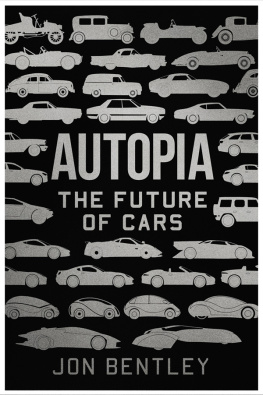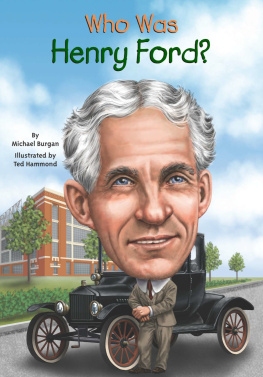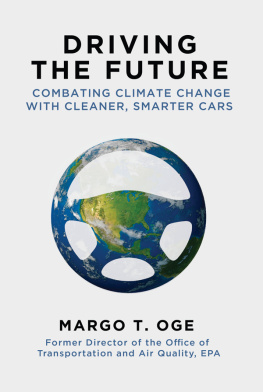Thank you for downloading this Simon & Schuster eBook.
Join our mailing list and get updates on new releases, deals, bonus content and other great books from Simon & Schuster.
C LICK H ERE T O S IGN U P
or visit us online to sign up at
eBookNews.SimonandSchuster.com
We hope you enjoyed reading this Simon & Schuster eBook.
Join our mailing list and get updates on new releases, deals, bonus content and other great books from Simon & Schuster.
C LICK H ERE T O S IGN U P
or visit us online to sign up at
eBookNews.SimonandSchuster.com

Simon & Schuster
1230 Avenue of the Americas
New York, NY 10020
www.SimonandSchuster.com
Copyright 2015 by Levi Tillemann-Dick
All rights reserved, including the right to reproduce this book or portions thereof in any form whatsoever. For information address Simon & Schuster Subsidiary Rights Department, 1230 Avenue of the Americas, New York, NY 10020.
First Simon & Schuster hardcover edition January 2015
SIMON & SCHUSTER and colophon are registered trademarks of Simon & Schuster, Inc.
The Simon & Schuster Speakers Bureau can bring authors to your live event. For more information or to book an event, contact the Simon & Schuster Speakers Bureau at 1-866-248-3049 or visit our website at www.simonspeakers.com.
Book design by Ellen R. Sasahara
Jacket design by Flamur Tonuzi
Library of Congress Cataloging-in-Publication Data is available.
ISBN 978-1-4767-7349-0
ISBN 978-1-4767-7351-3 (ebook)
For my father, Timber, who taught me how to drive and dream;
my grandfather Tom, who proved that a life lived for others is the only one worth living;
and my good friend Dan, who taught me how to write a book.
CONTENTS
INTRODUCTION
H E HAD gone forty-eight hours without sleepfiddling with springs, checking control systems. Everything was shaping up nicely, but his friends and business associatesnot to speak of his wifewere starting to worry. In fact, they had been worried about the obsessive young inventor for some time. For months, Henry Ford had been coming home from work and toiling late into the night. But the wait was almost over. It was now somewhere between 2 and 4 A.M. on a weekday and Ford was expected at work in a matter of hours. But he would not sleep. Ford was intent to finish the task before him.
Outside his 58 Bagley Avenue workshop, a hypnotic rain varnished the pebbled streets of Detroit. His spouse, Clara, and collaborator James W. Bishop helped where they could. But as the meticulous engineer wrapped up, it suddenly became clear that amidst all the springs and widgets Ford had omitted one highly significant variable: a brick wall. Henry Ford had built the equivalent of a ship in a bottle, for his Quadricycle could not fit through the workshop door.
At that point Ford could have retired to his bed and returned to his machine at a later date. But Ford decided it wasnt going to happen that way. Instead, he coolly grabbed an axe and began hacking at the door frame, and then the bricks. Blow by blow, Ford demolished a sizable swath of the rented garage. It was as if he was being propelled on by some invisible force immeasurably stronger than the physical barrier before him. In his gut Ford felt a fierce urgency that simply could not be bottled up one more day. He knew there were barrels of money to be made from this new invention, and time was wasting.
With the wall gone, Ford turned his attention back to the machine. He covered its air intake to choke the engine, James Bishop helped him turn over the crankshaft, and the Quadricycles two pistons roared to life. The thirty-two-year-old electrical engineer braced himself in the drivers seat, shifted the clutch out of neutral, and bolted forward into the dawn of automotive history. While Detroit slept, Henry Ford charged into a race that would transform the city and change the course of mankind. It was the first heat in a long series of contests that would relentlessly reform society, shift geopolitics, sow fortunes, and propel the global economy far into the next century and beyond; it was the race to build the car of the future.
At the time, the automotive industry was a speculative footnote in the vast global economy. But that would soon change. The industry was impelled forward by the genius, ambition, and relentless drive of insurgents like Ford. The prize was not just money, power, or glory: it was also a chance to control the fulcrum of innovation. It was a race that would soon be dominated by Americas Ford Motor Company. That ascendency continued well into the decades past World War II. But eventually, contenders from Japan, Germany, and even China would challenge American dominance.
This book is the story of todays race to build the car of the future and of the heirs to Fords legacy. It is about how a Japanese nuclear engineer, a former Audi executive, a South African visionary, and a Dutch chemist rocked the industrial landscape of the twenty-first century. Today automotive manufacturing accounts for almost $3 trillion of economic outputmore than the economy of Brazil. And the automobiles importance to growth, trade, innovation, military technology, and the environment is, for practical purposes, immeasurable. The industry is a point of national pride, a center for manufacturing employment, and an instrument of state power for the worlds most technologically advanced economiesmuch more so than most people realize.
Now, just as in Fords time, the ether is tinged with implacable change. The question is not if, but who and how soon? Empiresboth corporate and politicalare in a Great Race to build the car of the future. Victory will be found in patents, assembly lines, laboratories, boardrooms, and battery plants. The prize will again be measured in barrels of money, but also in mastery over a rapidly expanding share of the international economythe global market for electric vehicles.
The Great Race
I first became aware of this race seven years ago as I worked with my father on our own invention. In some ways, the parallels to Henry Fords early efforts were striking. Like Ford, my father was a lanky polymath with a keen eye for mechanical efficiencyand he always maintained a workshop to prototype his flights of fancy and ambition. Clean energy was his passion. So much so that when I was born, he announced my birth by inscribing LEVI on a Colorado license plate and proclaiming he had discovered a mother lode of energy that was characterized by fully biodegradable wastes and short charge times.
Around 2005, we started work on a radical new internal combustion engine design. We called it the Internally Radiating Impulse Structurethe IRIS Engine. The IRIS Engine was designed to be smaller, more efficient, and more powerful than its competitors, and we dared to believe it presaged the future of the automobile. Within a few decades, we hoped, every automaker in the world would be licensing our super efficient design.
But product development rarely goes according to plan.
One spring day a brake malfunction sent my fathers Dodge Caravan careening off a steep embankment near our home in Colorado. The cars fuel tank ruptured and before it had even come to rest, the vehicle was engulfed in flames. Doused in gasoline and fire, my father kicked out the windshield, pulled himself through, and rolled away from the wreckage. He had broken bones, but those were survivable. The gasoline burns over 90 percent of his body were another storyand the heat of the blaze had also seared his lungs. Ten days later he died in the burn unit of the University of Colorado Hospital.
Next page








